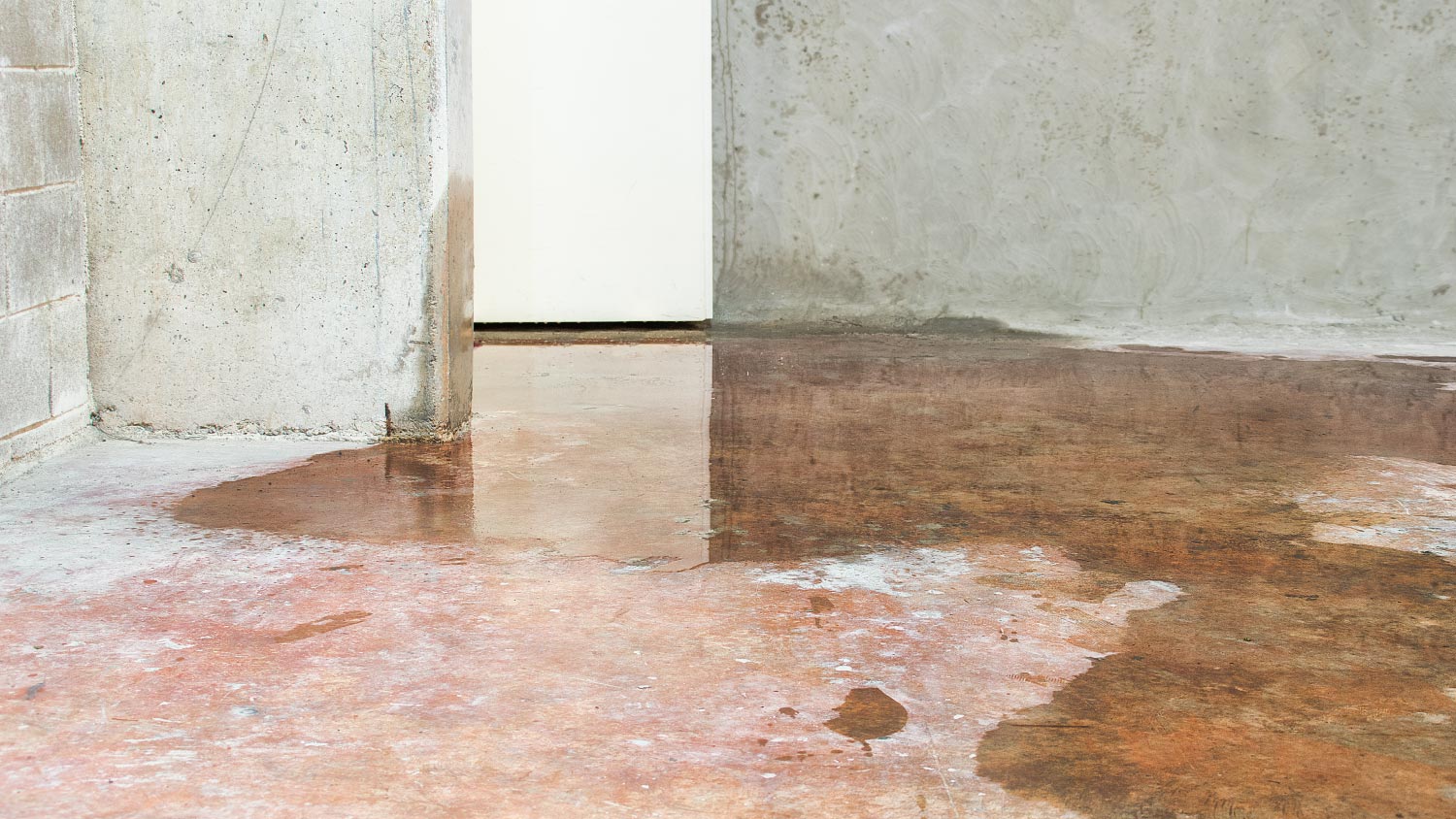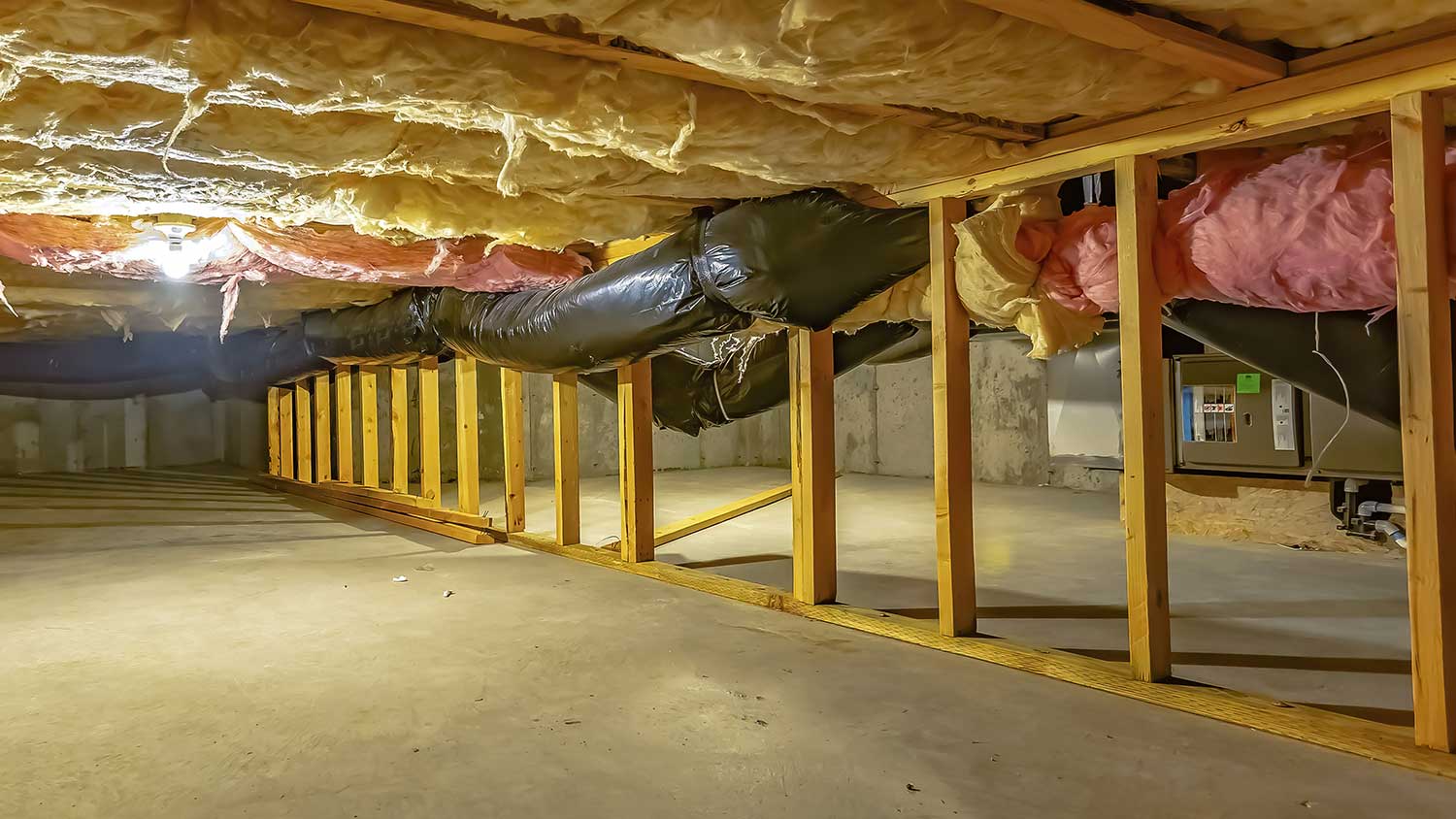
Who installs french drains? Learn which pros to hire, other options, and how pros get it done. Start your french drain hiring guide now.
The average cost to convert a crawl space into a basement is $105,000


Converting a crawl space to a basement ranges from $60,000 to $150,000, with most homeowners spending an average of $105,000.
Homeowners spend an average of $50 to $150 per square foot, depending on the materials, finishes, and contractors used.
Some of the top considerations include structural support, drainage, and waterproofing, all of which contribute to your total cost.
The process can add valuable living or storage space, offering an ROI of up to 75%.
Professional help ensures proper permitting, excavation, and compliance with building codes.
This article was updated using automation technology and thoroughly reviewed for accuracy by HomeAdvisor Editor Ryan Noonan.
Planning a crawl space–to–basement conversion starts with understanding the key numbers and structural requirements. Most homeowners spend between $83,000 and $128,000, with prices averaging $50 to $150 per square foot—depending on the size, access, and finish level.
While building an addition is often less expensive, a dig-out makes sense when your lot can’t expand outward and you want to capture valuable below-grade square footage. Hiring professional contractors to assist with your conversion ensures a safe, code-compliant project that enhances both your home's value and comfort.
Converting a crawl space to a basement costs between $50 and $150 per square foot, depending on the size and complexity. For a standard 1,000-square-foot space, expect to pay between $50,000 and $150,000, with larger spaces or those with difficult access conditions pushing costs toward the higher end of the range.
| Size (Sq. Ft.) | Average Conversion Cost |
|---|---|
| 500 | $25,000–$75,000 |
| 800 | $40,000–$120,000 |
| 1,200 | $60,000–$180,000 |
Several key costs should be considered when converting a crawl space into a full basement. Done right, it’s quick, but still takes a few distinct steps. For an unfinished basement, you’ll need first to dig out the crawlspace, install drainage and plumbing, and finish the space for living. Let's explore how these factors affect your total spend.
The cost of digging a basement under a crawl space ranges between $15,000 and $40,000 in most cases. The process often involves raising or bracing your home and digging out the dirt and rock.
Remember that this area usually has an unfinished floor, meaning there’s no slab or concrete to go through, so the digging is fairly straightforward. The real problem comes down to access, which can affect labor rates. Although uncommon, some homes have a poured concrete slab under the crawl space.
Installing drainage, plumbing, and sewer lines under a new foundation runs $3,000 to $9,000. These steps help make the basement function, especially if you plan to add a bathroom, laundry area, or kitchenette.
Once excavated, you can transform the area into a fully functional basement. A full basement remodel costs between $10,000 and $40,000, depending on the project's size and your desired finishings.
You’ll require the help of several contractors to complete your finished basement, including a plumber, electrician, HVAC technician, and designer. Labor costs vary for the following parts of a completed space:
Electrician costs: $2,000–$8,000
Plumbing costs: $2,000–$10,000
HVAC systems: $1,500–$7,000
Interior design costs: $3,000–$8,000
You’ll likely also require the help of a general contractor, who will charge 10% to 20% of the total project cost, and a structural engineer, with fees ranging from $2,000 to $5,000.
Because a conversion involves structural underpinning, waterproofing, and multiple permits, most homeowners hire licensed pros instead of tackling it themselves. Converting a crawl space into a finished basement requires specialized equipment, engineering expertise, and adherence to code compliance to prevent structural damage and water intrusion.
Hiring a licensed foundation contractor and structural engineer ensures safe excavation, proper underpinning, and professional-quality waterproofing, protecting both your home and your investment.
Consult a qualified local general contractor to protect your home and budget.
Converting a crawl space to a basement offers a solid return on investment, adding significant value to your home by increasing usable square footage without expanding your home's footprint. This transformation creates a versatile living space that can serve as additional bedrooms, a home office, an entertainment area, or valuable storage—all highly attractive features to potential buyers.
Beyond the immediate square footage gains, a properly converted basement also improves your home's overall functionality and energy efficiency. The project addresses the moisture and air quality issues commonly associated with crawl spaces, while also providing enhanced insulation and temperature control throughout your home.
When completed with high-quality materials and proper waterproofing, a converted basement can recoup 50 to 75% of project costs at resale, while making your property stand out in competitive real estate markets.
Here are a few ways to keep costs down when converting your crawl space into a basement:
Phase your project by completing the structural work first, then finishing the space over time as budget allows.
Consider an open ceiling design rather than installing drywall to save $1,000 to $3,000 while maintaining access to utilities.
Opt for vinyl or engineered flooring instead of hardwood to reduce costs by 30% to 50% per square foot.
Handle simple finishing tasks yourself, such as painting or installing pre-fabricated shelving, while leaving structural work to professionals.
Obtain multiple bids from contractors and compare detailed scope-of-work documents to ensure you're getting competitive pricing.
No place is more important than your home, which is why HomeAdvisor connects homeowners with local pros to transform their houses into homes they love. To help homeowners prepare for their next project, HomeAdvisor provides readers with accurate cost data and follows strict editorial guidelines. After a project is complete, we survey real customers about the costs to develop the pricing data you see, so you can make the best decisions for you and your home. We pair this data with research from reputable sources, including the U.S. Bureau of Labor Statistics, academic journals, market studies, and interviews with industry experts—all to ensure our prices reflect real-world projects.
From average costs to expert advice, get all the answers you need to get your job done.

Who installs french drains? Learn which pros to hire, other options, and how pros get it done. Start your french drain hiring guide now.

Learn who to call for foundation repair. Compare foundation repair contractors vs structural engineers and get clear steps to fix issues today.

Wondering who inspects home foundations? Learn when to call a structural engineer vs. a home inspector and what each pro checks.

Who to call for water in the basement or crawl space? Learn whether to hire a plumber, contractor, or structural engineer and what to expect

Wondering who inspects crawl spaces? See if a home inspector or crawl space contractor should handle your crawl space inspection and what to expect.

If you need to waterproof your basement, consider essential cost factors, including basement size, sealant type, home age, and more.